 W
WThe Adam Mickiewicz Institute is a government-sponsored organization funded by Poland's Ministry of Culture and National Heritage, and headquartered at ulica Mokotowska 25 in Warsaw.
 W
WThe Bernardine Cemetery, is one of the three oldest cemeteries in Vilnius, Lithuania. It covers about 38,000 square metres and has an estimated 14,000 burial sites. It was established in 1810 by the Bernardine monks of the Church of St. Francis of Assisi, just east of the city center in the Užupis district, and is situated on an embankment of the Vilnia river. Its development was a consequence of Tsarist authorities of the Russian Empire prohibiting burying the dead near churches. The residents of Vilnius moved the cemetery to what was then the outskirts of the city.
 W
WThe Polish Catholic Church, or Catholic Church in Poland, is part of the Roman Catholic Church under the spiritual leadership of the Pope in Rome, and the Episcopal Conference of Poland. There are 41 Catholic dioceses of the Latin Church and two eparchies of the Eastern Churches in Poland. These comprise about 10,000 parishes and religious orders. There are 33 million registered Catholics in Poland. The primate of the Church is Wojciech Polak, Archbishop of Gniezno. According to 2015 demographics, 92.9% of Poland's population is Roman Catholic.
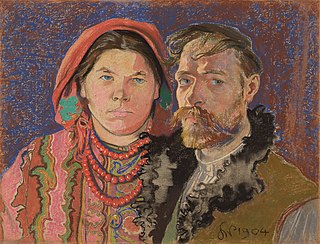 W
WChłopomania or Khlopomanstvo are historical and literary terms inspired by the Young Poland modernist movement and the Ukrainian Hromady. The expressions refer to the intelligentsia's fascination with, and interest in, the peasantry in late-19th-century Galicia and right-bank Ukraine.
 W
WA coffin portrait was a realistic portrait of the deceased person put on coffins for the funeral and one of the elements of the castrum doloris, but removed before the burial. It became a tradition to decorate coffins of deceased nobles (szlachta) with such funerary art in the times of the Polish–Lithuanian Commonwealth, particularly in the 17th and 18th centuries, the time of the baroque in Poland and Sarmatism. The tradition was limited to Commonwealth countries, although the term may also describe the Ancient Egyptian mummy portraits.
 W
WCasimir Pulaski was a Polish nobleman, soldier and military commander who has been called "the father of the American cavalry". He has had hundreds of monuments, memorial plaques, streets, parks and similar objects named after him.
 W
WTadeusz Kościuszko is one of the most honored persons in Polish history, in terms of places and events named in his honor.
 W
WCulture.pl is a large web portal devoted to Polish culture. It was founded by the Adam Mickiewicz Institute in March 2001. Written in Polish, English and Russian, the site promotes the work of Polish artists around the world and is a popular information database on all artistic aspects of Polish culture. Its ISSN number is 1734-0624.
 W
WThe czupryna, also known as the Polish halfshaven head, is a traditional Polish noble haircut, associated mainly with sarmatism, but worn by Poles in the Middle Ages too. It is marked by shaving hair above the ears and on the neck on the same height, with longer hair on the top of the head. For hundreds of years it was typical of Poles.
 W
WDziady is a term in Slavic folklore for the spirits of the ancestors and a collection of pre-Christian rites, rituals and customs that were dedicated to them. The essence of these rituals was the "communion of the living with the dead", namely, the establishment of relationships with the souls of the ancestors, periodically returning to their headquarters from the times of their lives. The aim of the ritual activities was to win the favor of the deceased, who were considered to be caretakers in the sphere of fertility. The name "dziady" was used in particular dialects mainly in Belarus, Polesia, Russia and Ukraine, but under different other names there were very similar ritual practices, common among Slavs and Balts, and also in many European and even non-European cultures.
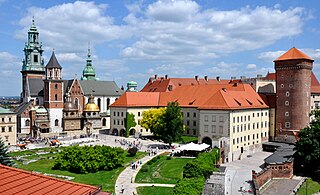 W
WBetween 1939 and 1941 objects of fine and decorative art deemed to be of exceptional artistic or historical value, which became known collectively as Polish National Treasures, were evacuated out of Poland at the onset of World War II in September 1939 and transported via Romania, France, and Britain to Canada. The bulk of them came from the Wawel Castle in Kraków and included a rich collection of Jagiellonian tapestries, as well as Szczerbiec, the medieval coronation sword of Polish kings; these came to be known as Wawel Treasures, an appellation sometimes erroneously extended to all of the evacuated items. Most of the rest of the salvaged objects were manuscripts from the National Library in Warsaw, including the earliest documents in the Polish language and Frédéric Chopin's autograph sheet music. The treasures were complemented by works of art from the Royal Castle of Warsaw and a Gutenberg Bible from the library of the Catholic Higher Seminary of Pelplin. After the end of the war, the treasures remained in Canada for nearly two decades due to competing claims made by the new communist government of Poland and the London-based Polish government-in-exile. Negotiations spanned over fifteen years before they were eventually returned to Poland in 1961.
 W
WThe "Grodzka Gate – NN Theatre" Centre is a cultural institution based in Lublin. It is housed in the Grodzka Gate also known as the Jewish Gate that historically used to be a passage from the Christian to the Jewish part of the city. In its activities the Center focuses on issues of cultural heritage. The Polish-Jewish past of Lublin is the corner stone of the art and educational programmes carried out by the "Gate".
 W
WInstytut Rozbitek is a center near Poznań, Poland meant for development of new work in the areas of film, theatre, music and new media. The institute was founded by the Oscar - Winning Polish composer Jan A.P. Kaczmarek in 2004. The Institute consists of the 19th-century castle and surrounding buildings, which are currently under renovation.
 W
WKazimierz is a historical district of Kraków and Kraków Old Town, Poland. From its inception in the fourteenth century to the early nineteenth century, Kazimierz was an independent city, a royal city of the Crown of the Polish Kingdom, located south of the Old Town of Kraków, separated from it by a branch of the Vistula river. For many centuries, Kazimierz was a place of coexistence and intermingling of ethnic Polish and Jewish cultures. The northeastern part of the district was historically Jewish, and its inhabitants were forcibly relocated by the German occupying forces into the Krakow ghetto just across the river in Podgórze in 1941. Today Kazimierz is one of the major tourist attractions of Krakow and an important center of cultural life of the city.
 W
WThe Kraków Society of Friends of Fine Arts is a social group of artists, artisans and their supporters founded in Kraków in 1854, under the Austrian Partition of Poland. Today, the Society operates from the Art Nouveau Palace of Art erected by its own members in 1901 at the Szczepański Square in Kraków Old Town. After major renovations of the Palace in 1996, the Society organizes local and international art exhibits and numerous other art initiatives.
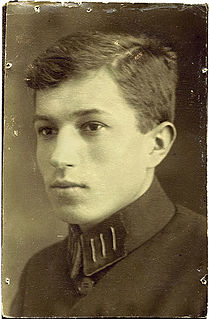 W
WKarol Kuryluk was a Polish journalist, editor, activist, politician and diplomat. In 2002 he was honored by Yad Vashem for saving Jews in the Holocaust.
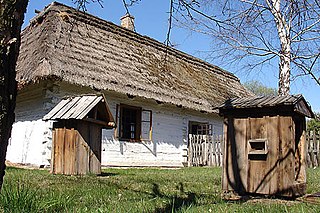 W
WThe Lasowiacy or Lesioki, are a subethnic group of the Polish nation, who reside in Lesser Poland, at the confluence of the Vistula and the San rivers, Subcarpathian Voivodeship, southeastern Poland. They are descended from various ethnic groups, which settled in the dense Sandomierz Forest across centuries, with a dominant Polish element. The Lasowiacy were formed as a separate subethnic group in the late 19th and early 20th century. They use their own dialect, which belongs to Lesser Polish dialect of the Polish language. Like most Poles, the Lasowiacy are Roman Catholics.
 W
WLviv Anti-Fascist Congress of Cultural Workers was an event that brought together the progressive intellectuals of Poland, Western Ukraine, and Western Belarus. It took place on May 16-17, 1936 in Lviv, being organized by the Communist Party of Poland along with the Communist Party of Western Ukraine in order to create the united front against Fascism.
 W
WLychakiv Cemetery, officially State History and Culture Museum-Preserve "Lychakiv Cemetery", is a historic cemetery in Lviv, Ukraine.
 W
WThe Memorial to Polish Soldiers and German Anti-Fascists is a war memorial in Berlin, dedicated in 1972. Built by the German Democratic Republic during the division of Germany, it is today the principal German monument to the Polish soldiers who died in World War II, as well as an important monument to the German resistance.
 W
WThe Millennium of the Polish State was a national celebration of the Christianization of Poland and the subsequent establishment of the first Polish nation. The celebrations took place over the years 1960–1966 by a resolution of the Sejm in 1958. The inauguration of the jubilee celebrations took place at the plenary session of the National Committee of the Unity Front on 16 February 1960 in Kalisz. The jubilee celebrations were accompanied by the educational program One thousand schools for the 1000th anniversary during which in the years 1959–1972 nearly 1.5 thousand schools were built. It was decided to use the anniversary by both the hierarchy of the Catholic Church and the Polish United Workers' Party for the propaganda in Poland. The church planned the celebration of the millennium of the baptism of Poland while the state authorities strictly commemorated the jubilee of the beginnings of the Polish nation.
 W
WThe National Heritage Board of Poland is a Polish governmental institution responsible for the objects considered most important to the nation's cultural heritage.
 W
W"Pole and Hungarian brothers be" and "Pole and Hungarian, two good friends" are English translations of a popular saying about the traditional kinship, brotherhood, and camaraderie between Poles and Hungarians.
 W
WThe architecture of Poland includes modern and historical monuments of architectural and historical importance.
 W
WPolish Baltic F. Chopin Philharmonic in Gdańsk is a concert hall located in Ołowianka, Gdańsk.
 W
WNational costumes of Poland vary by region. They are not worn in daily life but at folk festivals, folk weddings, religious holidays, harvest festivals and other special occasions. The costumes may reflect region and sometimes social or marital status.
 W
WThe Polish Institute and Sikorski Museum, known as Sikorski Institute, named after General Władysław Sikorski, is a leading London-based museum and archive for research into Poland during World War II and the Polish diaspora. It is a non-governmental organisation managed by scholars from the Polish community in the United Kingdom, housed at 20 Prince's Gate in West London, in a Grade II listed terrace on Kensington Road facing Hyde Park. It is incidentally part of the same Victorian development by Charles James Freake as the nearby Polish Hearth Club. Although the Institute is closer to the commercial centres of Kensington, it is just within the City of Westminster. In 1988 it merged with the formerly independent Polish Underground Movement (1939-1945) Study Trust -.
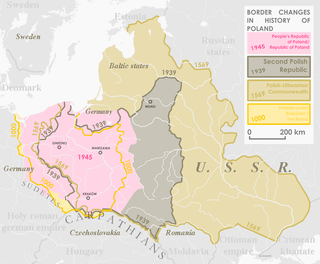 W
WPolonization involves the acquisition or imposition of elements of Polish culture, in particular the Polish language. This happened in some historic periods among the non-Polish populations of territories controlled or substantially under the influence of Poland. Like other examples of cultural assimilation, Polonization could either be voluntary or forced; it is most visible in the case of territories where the Polish language or culture were dominant or where their adoption could result in increased prestige or social status, as was the case for the nobility of Ruthenia and Lithuania. To a certain extent political authorities have administratively promoted Polonization, particularly in the period following World War II.
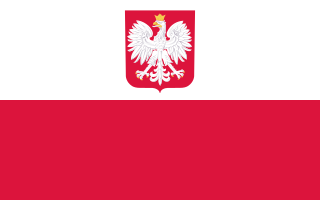 W
WA Polonophile, less often Polophile, is an individual who respects and is fond of Poland's culture as well as Polish history, traditions and customs. The term defining this kind of attitude is Polonophilia. The antonym and opposite of Polonophilia is Polonophobia.
 W
WPoznań Goats is one of the tourist attractions of Poznań. The mechanical goats' butting display takes place every day at 12:00 on the tower of the Poznań City Hall.
 W
WIn Polish culture, PRL nostalgia is nostalgia for aspects of life in Polish People's Republic.
 W
WSarmatism is an ethno-cultural concept with a shade of politics designating the formation of an idea of Poland's origin from Sarmatians, an Iranic people, within the Polish–Lithuanian Commonwealth. It was the dominant Baroque culture and ideology of the nobility (szlachta) that existed in times of the Renaissance to the 18th centuries. Together with another concept of "Golden Liberty", it formed a central aspect of the Commonwealth's culture and society. At its core was the unifying belief that the people of the Polish–Lithuanian Commonwealth descended from the ancient Iranian Sarmatians, the legendary invaders of contemporary Polish lands in antiquity.
 W
WA Saxon milepost was a milepost in the former Electorate of Saxony that gave distances expressed as journey times to the nearest eighth of an hour. With one hour being the equivalent of one league, this corresponds to a distance of about 566 m. The design of the mileposts varied according to the distance at which they were placed. They were hewn from natural stone into the shape of an obelisk, an ancient herma or a stele. Their prototype was the Roman milepost. From its German name römische Meilensäule the rather inaccurate German description of Säule was derived. The Saxon head postal director (Oberpostdirektor), Paul Vermehren, brought about their inception based on official distance surveys, whose results were given in leagues on the post mileposts. A league in Saxony at that time was meant to be an hour's journey, equivalent to half a mile or 4.531 kilometres.
 W
WThe Seven Wonders of Poland is a short list of cultural wonders located in Poland. The creation of the list was initiated by the leading Polish newspaper Rzeczpospolita in a country-wide plebiscite held in September 2007. The results were published in the following month.
 W
WThe shepherd's axe is a long thin light axe of Eurasian origin used in past centuries by shepherds in the Carpathian Mountains and in other territories which comprise today Slovakia, Czech Republic, Poland, Ukraine, Romania and Hungary. The features of a shepherd's axe combine a tool with a walking stick, that could be used as a light weapon. It has symbolic historical and cultural connotations and is still used as a prop in many traditional dances, for example the odzemok.
 W
WThe Filharmonia Śląska w Katowicach is a music institution in Katowice, Silesia, Poland. The Silesian Philharmonic in Katowice was founded in 1945. The first concert of the orchestra took place on 26 of May 1945. A mixed choir was added in 1973.
 W
WThe Society of Polish Artists "Sztuka" founded in 1897 in Kraków, was a gathering of prominent Polish visual artists from around the turn of the century living under the foreign partitions of Poland. Its main goal was to reaffirm the importance and unique character of Polish contemporary art at a time, when Poland could not exist as sovereign nation.
 W
WSokół, or in full the "Falcon" Polish Gymnastic Society, is the Polish offshoot of the Czech Sokol movement, and the oldest youth movement organization of Poland. Created in Lwów in 1867, by the end of World War I the movement had its units – gniazda ("Nests") – in all parts of Poland, as well as among the Polish communities abroad. The group's goal was to develop fitness, both physically and mentally, with a motto mens sana in corpore sano.
 W
WSt. Dominic's Fair, together with Weihnachtmarkt and Oktoberfest, is one of the biggest trade and cultural open-air events in Europe, organized in the Main City – the representative part of Gdańsk, Poland.
 W
WThursday Lunches were gatherings of artists, intellectuals, architects, politicians and statesmen held by the King of Poland, Stanisław II August during the Enlightenment in Poland.
 W
WThe two-finger salute is a salute given using only the middle and index fingers, while bending the other fingers at the second knuckle, and with the palm facing the signer. This salute is used by the Polish Armed Forces, other uniformed services, and, in some countries, the Cub Scouts.
 W
WThe Union of Poles in Belarus is an organisation located in Belarus. The group, which has a membership of 20,000 people, represents the Polish minority in Belarus, numbering about 300,000 it forms the second largest ethnic minority in the country after the Russians, at 3.1% of the total population. An estimated 180,905 Belarusian Poles live in large agglomerations and 113,644 in smaller settlements, with the number of women exceeding the number of men by about 33,000., as per official data.
 W
WVechornytsi are Slavic traditional gatherings with music, songs, jokes and rituals. Vechornytsi traditionally began in late September after the seasonal agricultural work was over. Young people from villages gathered in the evenings for entertainment. There were everyday and festive vechornytsi. During everyday parties people created folk art objects like rushnyky, while entertaining themselves by singing songs or telling jokes. During festive vechornytsi rich dinners were cooked, and there was music and dancing. It was the ladies' responsibility to cook a dinner and the men's responsibility to provide everybody with music, drinks, and sweets.
 W
WZielony Balonik was a popular literary cabaret founded in Kraków by the local poets, writers and artists during the final years of the Partitions of Poland. The venue was a gourmet restaurant of Apolinary J. Michalik called the Michalik's Den. The cabaret was founded in 1905 and ran regularly until 1912.